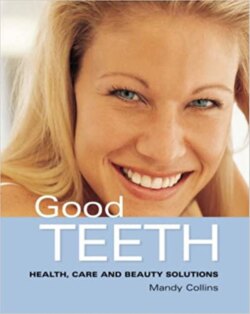Читать книгу Good Teeth - Mandy Collins - Страница 10
На сайте Литреса книга снята с продажи.
GOOD ORAL HYGIENE Your brushing technique
ОглавлениеYour teeth are supposed to last a lifetime, but cavities and gum disease often shorten their lifespan. The key to teeth that last is correct brushing and flossing on a daily basis. Here, prevention really is better than cure.
However, while we all probably brush our teeth at least once daily, and floss occasionally, the question is whether or not we are brushing correctly and effectively. A good brushing technique is vital if you are going to get into all the nooks and crannies between tooth and gum. So here’s a basic guideline: hold the toothbrush in a comfortable grip and place the head at about 45 degrees to the surface of your teeth: this allows the bristles to get into the space between the gum and teeth. Starting at one side of your mouth, systematically brush first the outside of your upper and lower teeth, moving from one side of your mouth to the back of the other side. Then do the same for the inside of all the teeth, working from one side to the other, and repeat for the chewing surfaces.
The key to teeth that will last is correct brushing and flossing daily.
Fluoride strengthens teeth, but too much can actually discolour them.
Ensure you are holding your toothbrush firmly, but comfortably, with its head at a slight angle to your teeth, and systematically clean every surface.
Finally, wipe your tongue with two or three strokes from back to front, and use your tongue to test whether or not your teeth feel smooth and clean. If not, return to whichever areas need attention, and brush them again.
In the absence of fluoridated water, it is essential to use a toothpaste containing fluoride. Note that, unlike adults, if children ingest too much fluoride, it can discolour their teeth, so you need to find a good balance.
Fluoride strengthens their teeth in two ways: either from the inside, where it is systemically absorbed, or by direct application to the surfaces of teeth to make them more resistant to decay. The latter is what you are doing when you brush your teeth.
To get the balance right, start by brushing your teeth at least twice a day – three times if you can manage it. If you really can’t get that right, then at least ensure that your once-a-day brushing occurs last thing at night. Bacteria accumulate on your teeth during the day, and saliva flow diminishes at night, so your teeth have less protection while you sleep. When you have finished brushing your teeth, don’t rinse your mouth afterwards – simply spit out any excess toothpaste and leave the remainder on your teeth, so that the fluoride can do its work.
